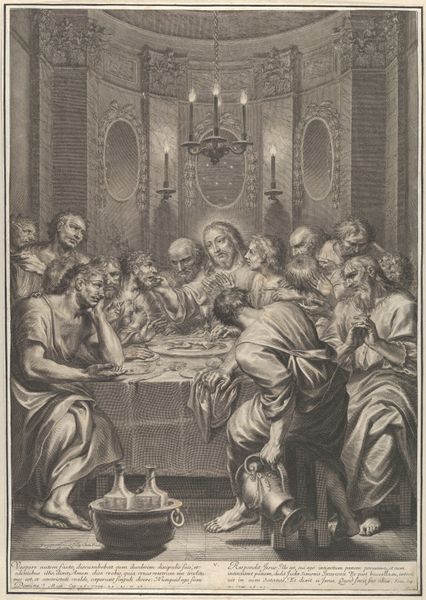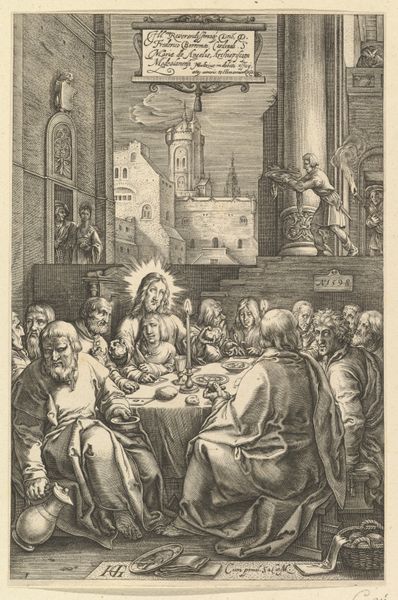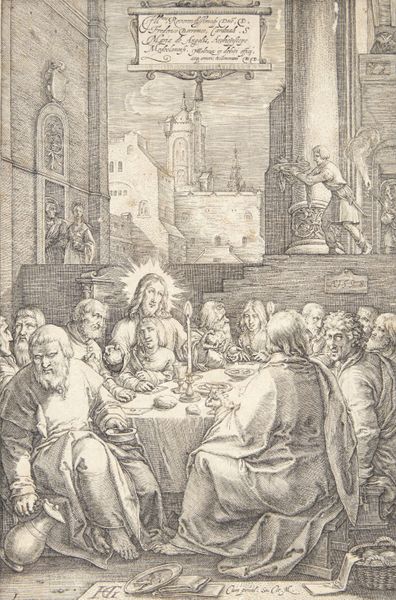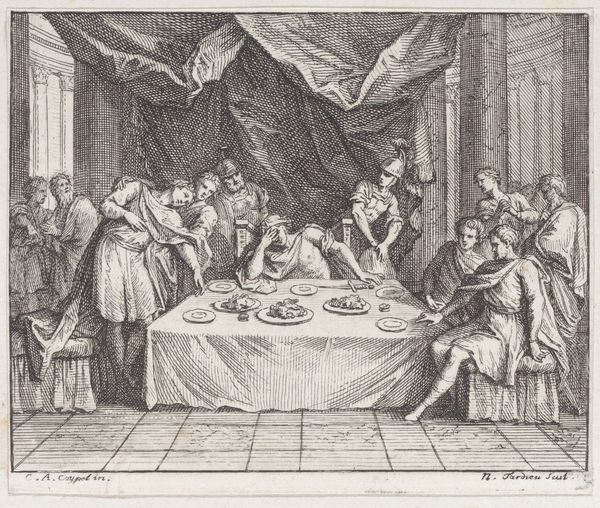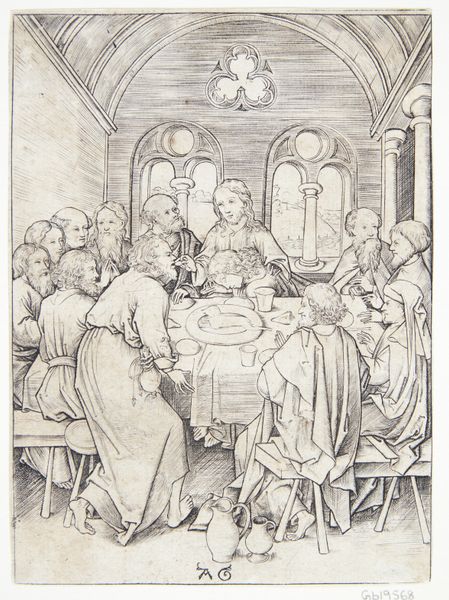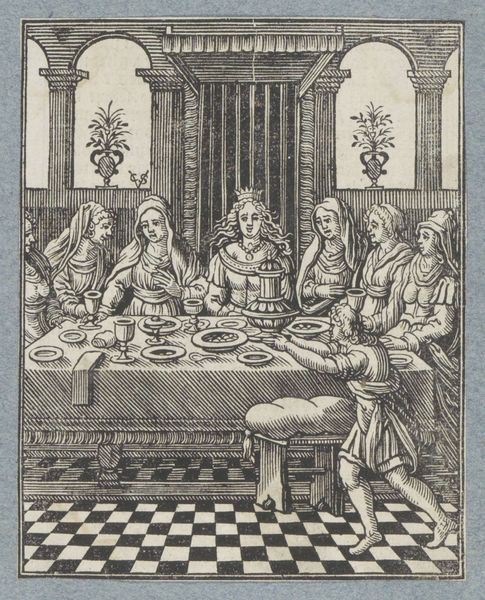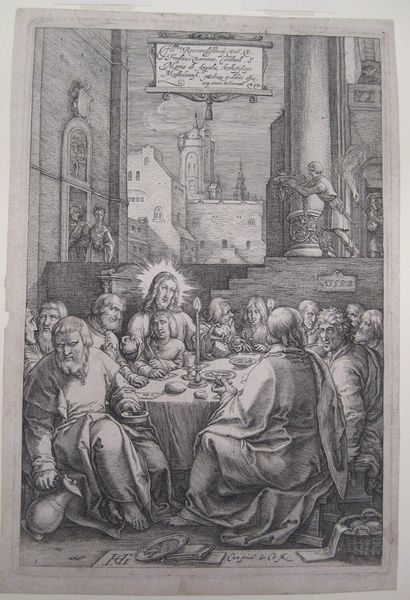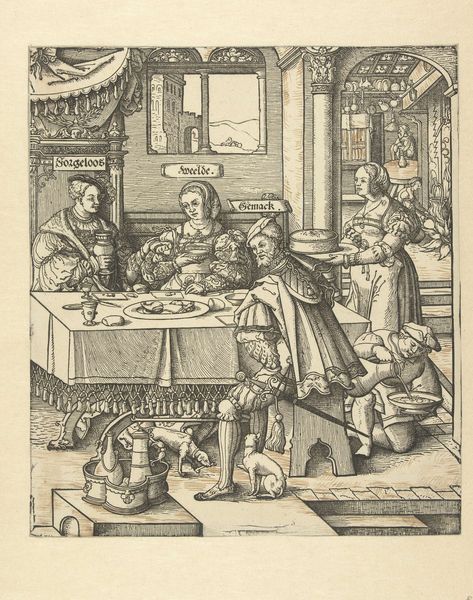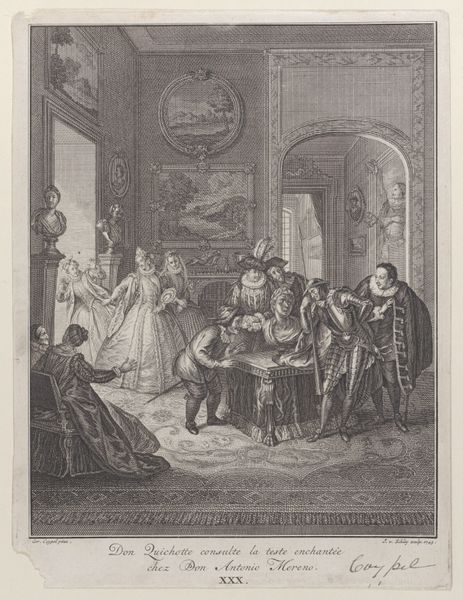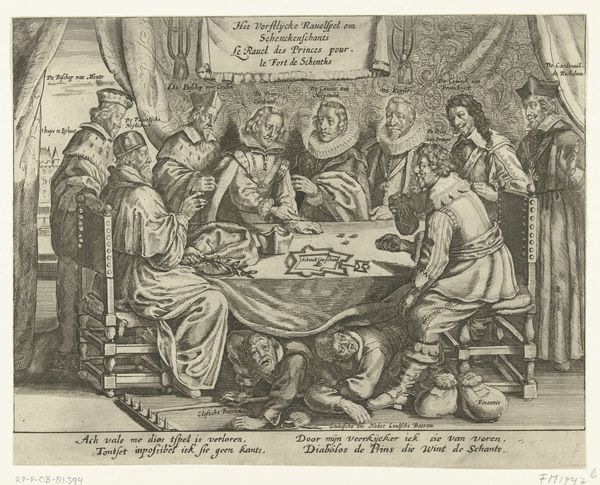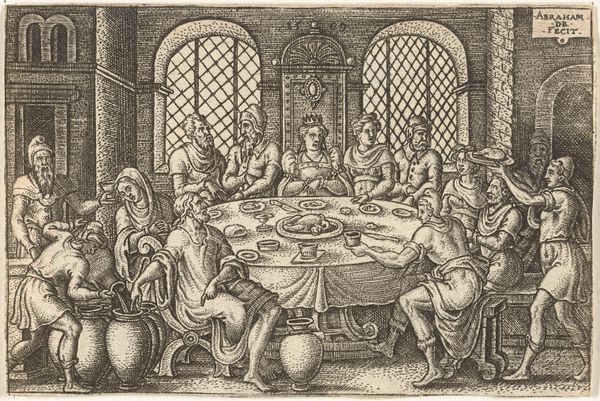
drawing, print, engraving
#
drawing
# print
#
figuration
#
history-painting
#
italian-renaissance
#
engraving
#
christ
Dimensions: Sheet: 3 7/16 × 2 3/8 in. (8.7 × 6 cm)
Copyright: Public Domain
Editor: Here we have "The Marriage at Cana," a print from between 1590 and 1625, currently residing at the Metropolitan Museum of Art. It's so intricate, a dense composition really. So many figures packed into a small space around this long table. What do you make of all the imagery packed into this piece? Curator: The image resonates with layers of meaning, doesn’t it? Look at the focused, almost stoic faces, reminiscent of classical depictions of power and divinity. How do those expressions contribute to the symbolic weight of the scene for you? Editor: They add to a sense of importance, certainly. Is that why the artist chose such formal, rigid poses for everyone? Curator: It's not merely formality; it’s about conveying a sense of timeless truth. This gathering, ostensibly a celebration, is enshrined with symbols: Christ at the center of community, the wine being made as an evocation of both spiritual sustenance and sacrifice, the rich with details intended to inspire and uplift. What feelings do these elements, and the transformation of water to wine, conjure within you? Editor: A feeling of transformation and abundance, I suppose, even divinity. It’s not just a party; it’s something more sacred. Is that the message intended for the viewers? Curator: Partly that, and partly to plant a cultural memory of transformation and the possibility for it in any situation, humble as it seems. The engraver is using the language of image to transmit ideals and spiritual values. Editor: I see. It’s fascinating to think about how art becomes a repository of cultural values, transmitting memory through these subtle symbols and images. Curator: Indeed. And our encounter with them revives, reinterprets, and perhaps, transforms us as well.
Comments
No comments
Be the first to comment and join the conversation on the ultimate creative platform.

